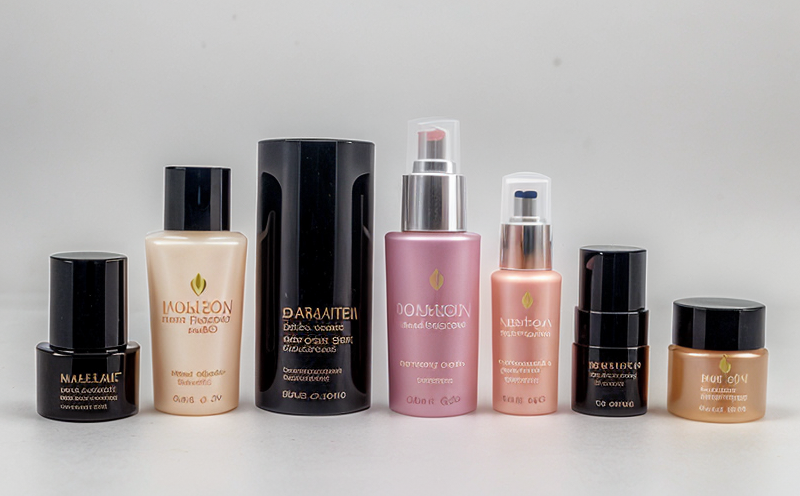Freeze-Thaw Stability Testing of Cosmetic Packaging
In the world of cosmetics, ensuring that packaging remains intact and functional under various environmental conditions is critical. Freeze-thaw stability testing assesses how packaging interacts with its contents during repeated cycles of freezing and thawing. This process is essential for cosmetic products because it can affect product quality, shelf life, and consumer safety.
Freeze-thaw cycles simulate real-world conditions that a product might encounter in storage or transportation. For example, a cosmetic item might be exposed to cold temperatures during shipment or stored in a refrigerator. Understanding how packaging behaves under these conditions helps manufacturers ensure that their products maintain optimal quality and do not degrade prematurely.
The freeze-thaw testing process involves placing the sample into a controlled environment where it is subjected to repeated cycles of freezing and thawing. The temperature is typically set to -20°C for 3 hours, followed by a return to room temperature (approximately +25°C) for another three hours. This cycle is then repeated up to five times or as specified in the testing protocol.
During these cycles, it's important to monitor several factors that could impact product integrity and safety:
- Package Integrity: Checking for any signs of leakage or damage after each cycle.
- Label Adhesion: Ensuring labels remain firmly attached throughout the cycles.
- Color and Appearance: Observing changes in color, texture, or appearance that might indicate degradation.
The freeze-thaw stability test is not just about preventing physical damage; it also helps identify potential issues related to product migration. Migration refers to the transfer of certain ingredients from one part of a product to another due to changes in temperature and pressure. This can lead to contamination or altered product performance.
For instance, if a cosmetic contains active ingredients that could leach into the packaging material during freeze-thaw cycles, this could compromise the efficacy of the product. By conducting thorough freeze-thaw stability tests, manufacturers can identify such risks early in the development process and take corrective actions.
The test results are then compared against industry standards to ensure compliance with regulations. For cosmetics, these standards often include international guidelines like those provided by the International Organization for Standardization (ISO) or the European Union's Cosmetics Regulation.
Scope and Methodology
The scope of freeze-thaw stability testing in cosmetic packaging encompasses a wide range of materials commonly used, including glass containers, plastic bottles, and metal cans. The methodology involves several key steps:
- Sample Preparation: Carefully selecting samples that represent the intended product and packaging.
- Testing Conditions: Ensuring controlled conditions for freezing and thawing cycles as previously described.
- Data Collection: Recording observations on package integrity, label adhesion, and any changes in appearance or texture.
The testing environment must be calibrated to ensure consistent results. This includes maintaining precise temperature control during the freeze-thaw cycles. Additionally, it's important to document all findings meticulously for quality assurance purposes.
Industry Applications
This type of testing is particularly relevant in sectors where packaging and product integrity are paramount, such as pharmaceuticals and cosmetics. In the cosmetic industry, it ensures that products remain stable throughout their lifecycle, from production to consumer use.
Manufacturers rely on freeze-thaw stability tests to:
- Evaluate how packaging affects the shelf life of a product.
- Determine if any ingredients migrate from one part of the container to another.
- Ensure that labels remain readable and adhered securely after multiple cycles.
In addition, this testing helps companies comply with regulatory requirements, which can vary by country or region. For example, in Europe, the Cosmetics Regulation mandates certain safety standards for packaging materials used in cosmetics.
Quality and Reliability Assurance
- Ensures Compliance: By adhering to industry standards such as ISO, ensuring that the product meets regulatory requirements.
- Reduces Risks: Identifying potential issues early in development can save time and resources by avoiding costly recalls later.
- Increases Consumer Confidence: Products that pass rigorous testing are more likely to be trusted by consumers, enhancing brand reputation.
The freeze-thaw stability test is just one part of a comprehensive quality assurance program. By incorporating this test into the development process, manufacturers can significantly enhance the reliability and safety of their cosmetic products.





